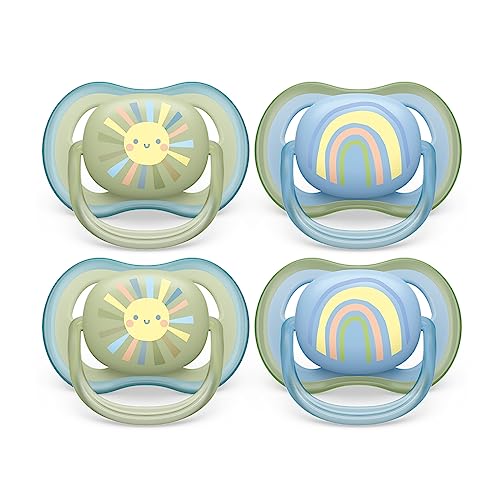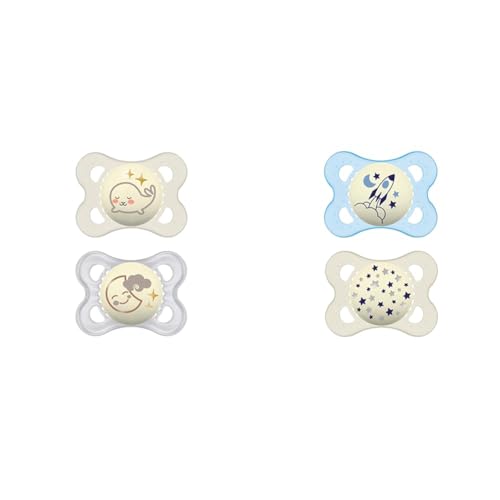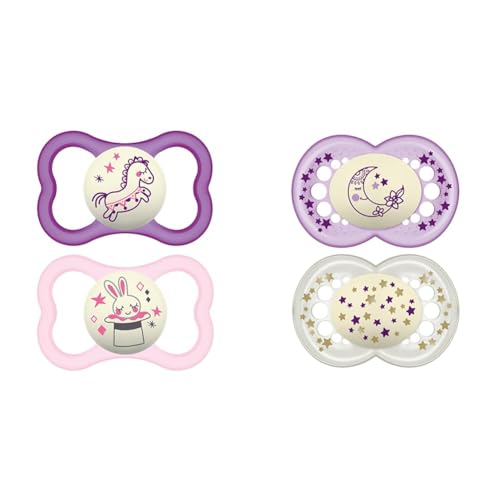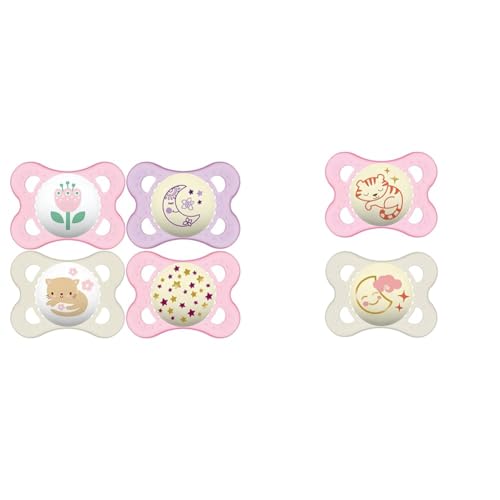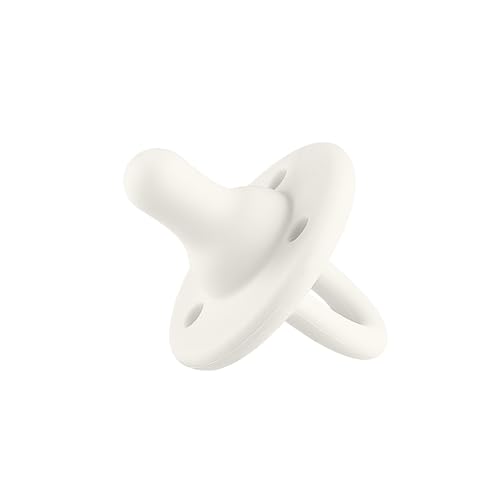New parent—or maybe not-so-new parent who’s just tired—you’ve landed here because your baby’s cries are testing your sanity, right? I get it. Those wails can hit you like a freight train at 3 a.m., and you’d do anything for a moment of peace. Well, buckle up, because I’m about to let you in on a little secret that’s been soothing babies (and saving parents) for generations: the pacifier.
Did you know that pacifiers can cut crying time by up to 40% in some cases? That’s not just a random stat I pulled out of thin air—it’s backed by studies from folks like the American Academy of Pediatrics. Whether it’s teething pain, a restless night, or just a cranky mood, a pacifier might be the tiny hero you didn’t know you needed. Stick with me here, because I’m going to break down why pacifiers work, how to pick the best one, and—most importantly—where to snag one fast on Amazon (because who has time to browse endlessly?). Ready to turn those tears into calm? Let’s roll!
- The Magic Behind Pacifiers: Why They Work Like a Charm
- Picking the Perfect Pacifier: What to Look For
- Top Pacifiers You Can Buy Right Now (and Where to Get ‘Em)
- How to Use a Pacifier Like a Pro (Tips from a Tired Parent)
- Busting Pacifier Myths: What You Don’t Need to Worry About
- Conclusion: Your Baby’s Calm Starts Here
The Magic Behind Pacifiers: Why They Work Like a Charm
So, what’s the deal with pacifiers? Why do they have this almost mystical power to hush a screaming baby? It’s not just luck—it’s science, and honestly, it’s pretty cool. Babies are wired to suck. It’s a natural reflex they’re born with, and it’s not just for eating. Sucking calms them down, lowers their heart rate, and even helps them drift off to sleep. Think of it like their built-in stress-relief button.
Here’s the kicker: pacifiers don’t just soothe your baby—they can soothe you too. Less crying means more quiet moments to sip that coffee you’ve reheated three times already. And trust me, I’ve been there—those little victories matter. Let’s dig into the specifics of how pacifiers pull off this magic trick.
Instant Calm for Cranky Babies
Ever notice how your baby stops mid-meltdown the second you pop a pacifier in their mouth? That’s the sucking reflex kicking in, sending a signal to their brain that says, “Hey, everything’s cool now.” It’s like flipping an off switch for fussiness. Whether they’re overtired, overstimulated, or just missing that cozy womb vibe, a pacifier steps in to save the day.
Teething Relief That Actually Works
Oh, teething. The phase every parent dreads. Those tiny teeth pushing through can turn your sweet little angel into a drooling, grumpy mess. A pacifier—especially one designed for teething—can ease that gum pain fast. Look for options with textured surfaces or ones you can chill in the fridge. Babies love it, and you’ll love the break from the whining.
Better Baby Sleep (and Yours Too!)
Sleep is the holy grail of parenthood, right? Pacifiers can help with that too. Studies show they’re linked to longer, deeper sleep for babies—some even say it reduces the risk of SIDS (sudden infant death syndrome) when used at bedtime. I’m no doctor, but the American Academy of Pediatrics gives it a thumbs-up, and that’s good enough for me. More sleep for baby = more sleep for you. Win-win.
Picking the Perfect Pacifier: What to Look For
Alright, so you’re sold on the pacifier idea. Awesome! But here’s where it gets tricky—there are about a million options out there, and not all pacifiers are created equal. I’ve sifted through the chaos (and maybe some late-night Amazon rabbit holes) to figure out what matters most. Here’s your cheat sheet to finding the best pacifier for your little one.
- Material Matters: Silicone or latex? Silicone’s durable and easy to clean—perfect if you’re a germaphobe like me. Latex is softer but wears out faster. Your call!
- Shape & Size: Newborns need smaller, lighter pacifiers. Older babies might prefer orthodontic shapes that support their growing teeth. Check the age range on the box.
- Safety First: Look for one-piece designs (less choking risk) and BPA-free materials. Ventilation holes around the mouth are a must to avoid rashes.
- Extras That Wow: Glow-in-the-dark handles for midnight hunts? Yes, please. Some even come with cute designs or clip-on straps.
Pro tip: Grab a few different styles to see what your baby vibes with. They’re picky little critics sometimes! Need a starting point? I’ve got some killer recommendations coming up.
Top Pacifiers You Can Buy Right Now (and Where to Get ‘Em)
Let’s cut to the chase—you’re here to shop, not just read my ramblings. I’ve rounded up the best pacifiers you can snag on Amazon.com, Amazon.co.uk, and Amazon.ca. These are parent-tested, baby-approved, and ready to ship fast. Let’s check ‘em out!
1. Philips Avent Soothie Pacifier
- Why It Rocks: Hospital-grade silicone, one-piece design, and a shape babies adore.
- Best For: Newborns (0-3 months) who need something simple and safe.
- Price: Around $8–12 for a 2-pack. Total steal.
2. MAM Glow-in-the-Dark Pacifier
- Why It Rocks: Orthodontic nipple, glows for easy nighttime finds, and comes in adorable patterns.
- Best For: 6+ months or teething babies who need a little extra comfort.
- Price: $10–15 for a 2-pack. Worth every penny when you’re fumbling in the dark.
3. Tommee Tippee Closer to Nature Pacifier
- Why It Rocks: Mimics a natural nipple shape, lightweight, and super soft for sensitive gums.
- Best For: Picky babies who want that breastfed feel.
- Price: $9–13 for a 2-pack. Affordable and reliable.
How to Use a Pacifier Like a Pro (Tips from a Tired Parent)
Okay, you’ve got your pacifier. Now what? It’s not just about popping it in and calling it a day—there’s a bit of an art to it. I learned this the hard way after my kid spit it out 17 times in one night. Here’s what works.
- Introduce It Early (But Not Too Early): Wait till breastfeeding is solid—usually 3-4 weeks—then give it a go. Babies adapt fast.
- Keep It Clean: Boil it or toss it in the dishwasher regularly. Dropped it on the floor? Don’t be that parent—sanitize it.
- Wean When It’s Time: Most experts say to ditch it by age 2 to avoid dental drama. Start slow around 12 months if you can.
- Have Backups: They disappear like socks in the laundry. Stock up!
Oh, and here’s a little story: My friend Sarah swore she’d never use a pacifier—until her son hit a teething phase that lasted forever. One desperate Amazon order later, she was singing its praises. True story.
Busting Pacifier Myths: What You Don’t Need to Worry About
I’ve heard it all—“Pacifiers ruin teeth!” “They’ll never stop using it!”—and yeah, some of that’s overblown. Let’s clear the air with a quick myth-busting session.
- Myth #1: They Wreck Teeth Early
Nope. Studies say dental issues only pop up if kids use them past age 3 or 4. You’ve got time. - Myth #2: Babies Get Addicted
Not really. They might love it, but weaning’s easier than you think—especially with a solid plan. - Myth #3: It’s a Crutch
Uh, so what? If it works, it works. You’re not failing as a parent—you’re winning at survival.
Conclusion: Your Baby’s Calm Starts Here
So, there you have it—pacifiers are basically tiny miracles in disguise. They soothe crying, ease teething, and help everyone get some sleep. Whether you’re grabbing a Philips Avent Soothie or a glow-in-the-dark MAM, you’re just a click away from quieter days (and nights).
Your baby will thank you—and honestly, so will your sanity. Got a pacifier story or a fave brand? Drop it in the comments—I’d love to hear!




